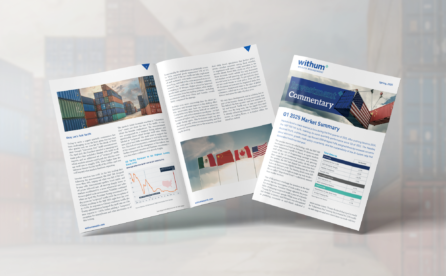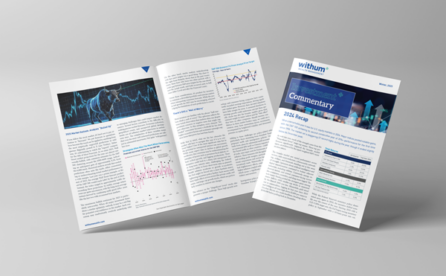September: Investors look for Federal Reserve to follow the European Central Bank and China
In early September, the European Central Bank took steps to ease monetary policy and China introduced new infrastructure stimulus measures, as economic news in both regions continued to show signs of slowing. Both these actions have led many to expect the Federal Reserve to do the same with some form of quantitative easing, following poor manufacturing data and a softer-than-expected employment report in August. Morningstar economists believe that lowering rates further may do little to help the economy. Corporations are already awash with cash, while consumers are still finding it difficult to get loans at these low rates. Furthermore, commodities are on the rise again with gold setting a five-month high, and oil prices moving higher.
GDP: Consistent year-over-year growth
Second quarter real GDP was revised upward to 1.7% from 1.5%, which typically means that things were stronger in the last month of the quarter than originally anticipated. Overall, consumer spending was revised up, exports also improved (despite turmoil in Europe), and government spending shrank less than previously estimated. Although the quarter-to-quarter data over the last 2 years continued to be extremely volatile (ranging from 0.1% to 4.1%), the year-over-year data shows GDP growing at a slow but consistent pace (1.6% to 2.8%).
Employment: While August data was disappointing, some inconsistencies might explain the weak reading
August saw a disappointing 96,000 jobs being added, down from 163,000 jobs in July. Morningstar economists have highlighted a few inconsistencies over this data: at a time when new and existing home sales were up, the report indicated construction employment did not grow at all. Also, the employment at building material and garden centers was reported to have fallen by almost 10,000 people, which Morningstar economists felt was unlikely, given the better construction market. An unusually large number of employees (380,000) left the workforce in August, which caused the unemployment rate to drop to 8.1% from 8.3%. Morningstar economists believe that this was mainly because of students returning to school from their summer jobs. While seasonal adjustment factors are typically supposed to capture this change, many schools and universities are shifting the start of their school year earlier in August. The high dropout rate could also have come from more employees quitting, or ceasing to look for jobs, to go back to school due to poor economic prospects.
Housing: The improving trend continues; tight lending standards and weak appraisals are holding back closings
The housing recovery has continued long enough that both leading indicators (pending home sales) and lagging indicators (Case-Shiller Home Price Index) were moving in the same positive direction. July pending home sales jumped 2.4% compared with June and 12.4% compared with July 2011. It is important to note that pending sales have been higher than closed sales all year, as the failure of homes to appraise at the agreed-upon price and tight lending conditions are holding back closings. In June, the Case-Shiller 20-city index increased 0.5% on a year-over-year basis, which marked the first year-over-year increase in two years. Although the index just broke into positive territory, the improving trend has been in place for six consecutive months. Month-to-month data showed a 2.3% increase, and all 20 cities in the index showed home price improvement.
Manufacturing: Auto sales shine but U.S. continues to slow
U.S. manufacturing in August continued to slow, as new orders fell and inventory levels increased. However, auto sales accelerated to 14.52 million units in August, the best performance since the cash-for-clunkers promotion in 2009. Year-over-year sales growth of over 20% was inflated by a strong recovery from Japanese brands that suffered supply shortages last August because of the tsunami. Pent-up demand and low cost has also resulted in the Detroit Big Three reporting year-over-year gains of more than 10%, mainly from pickup truck sales. Outside the U.S., manufacturing in Europe continued to weaken, including Germany, because of softer orders from China. China’s manufacturing sector also underperformed, reporting its lowest level since 2009.
You should not assume that any discussion or information contained in the presented material(s) serves as the receipt of, or as a substitute for, personalized investment advice from PWM. To the extent that a reader has any questions regarding the applicability of any specific issue discussed above to his/her individual situation, he/she is encouraged to consult with the professional advisor of his/her choosing. ©2012 Morningstar, Inc. All Rights Reserved. The information contained herein (1) is intended solely for informational purposes; (2) is proprietary to Morningstar and/or the content providers; (3) is not warranted to be accurate, complete, or timely; and (4) does not constitute investment advice of any kind. Neither Morningstar nor the content providers are responsible for any damages or losses arising from any use of this information. Past performance is no guarantee of future results. “Morningstar” and the Morningstar logo are registered trademarks of Morningstar, Inc. Photo Credit: Jonathan Crookes
If You Liked This Article, SHARE IT!
Help Us Spread The Word. Share This Article With Your Friends & Peers



